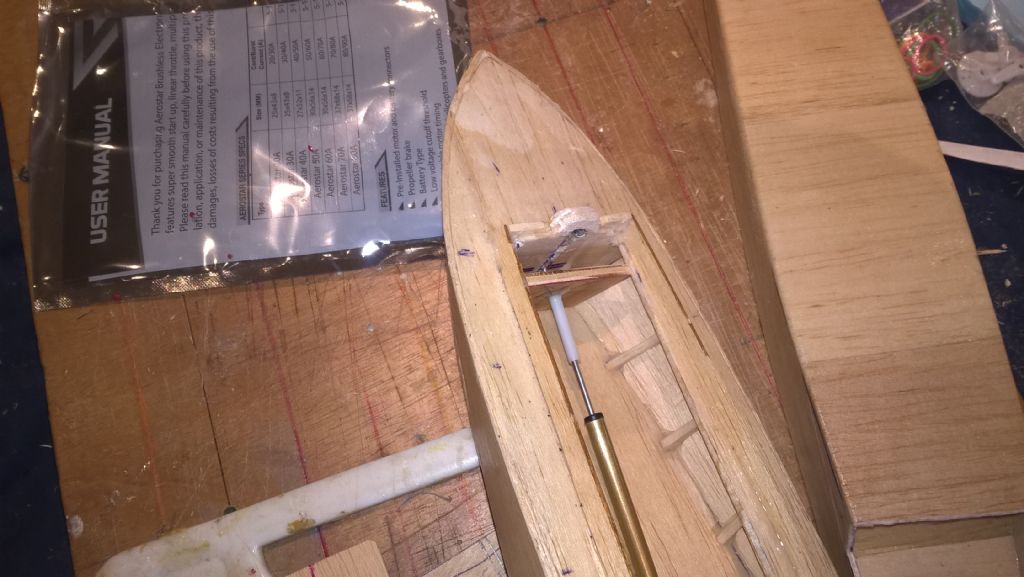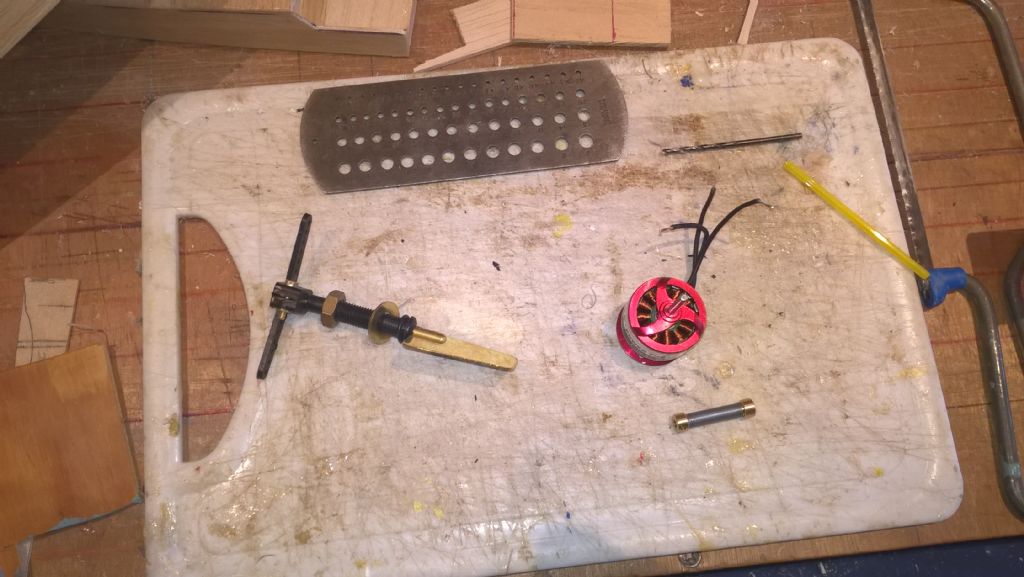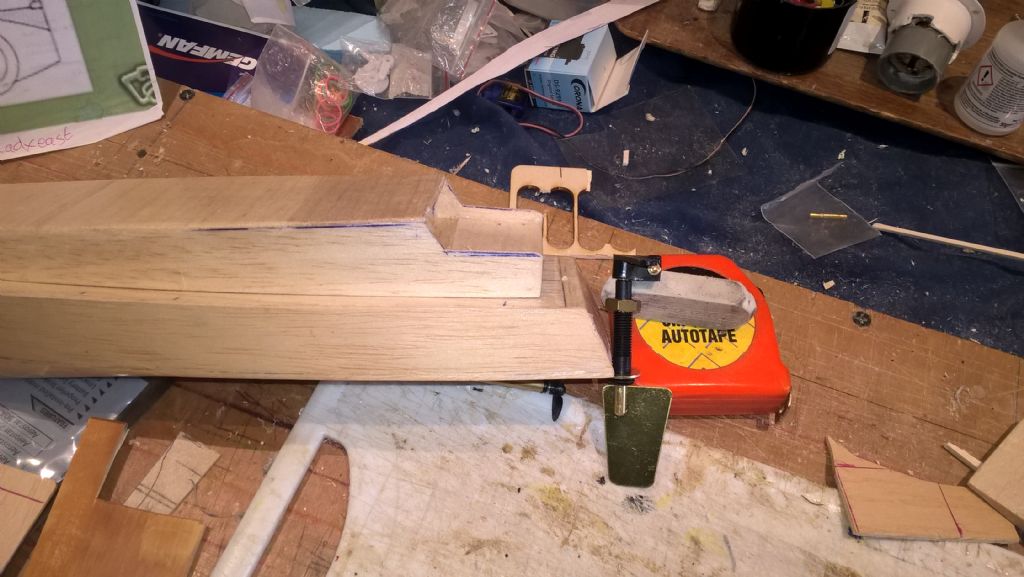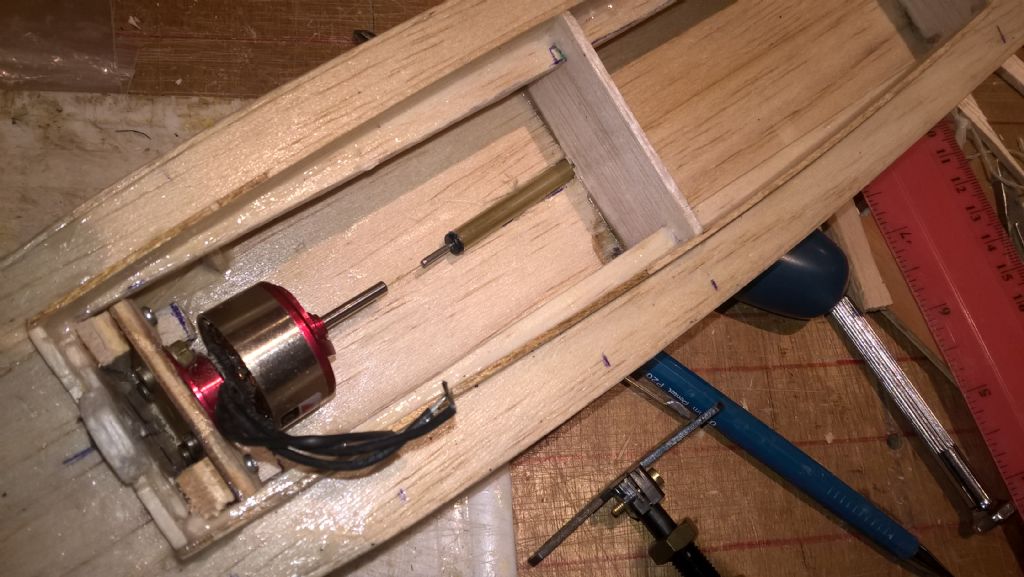Ray
No need to be overly frightened, those bits were bought with a view of powering a model of John Cobbs "Crusader"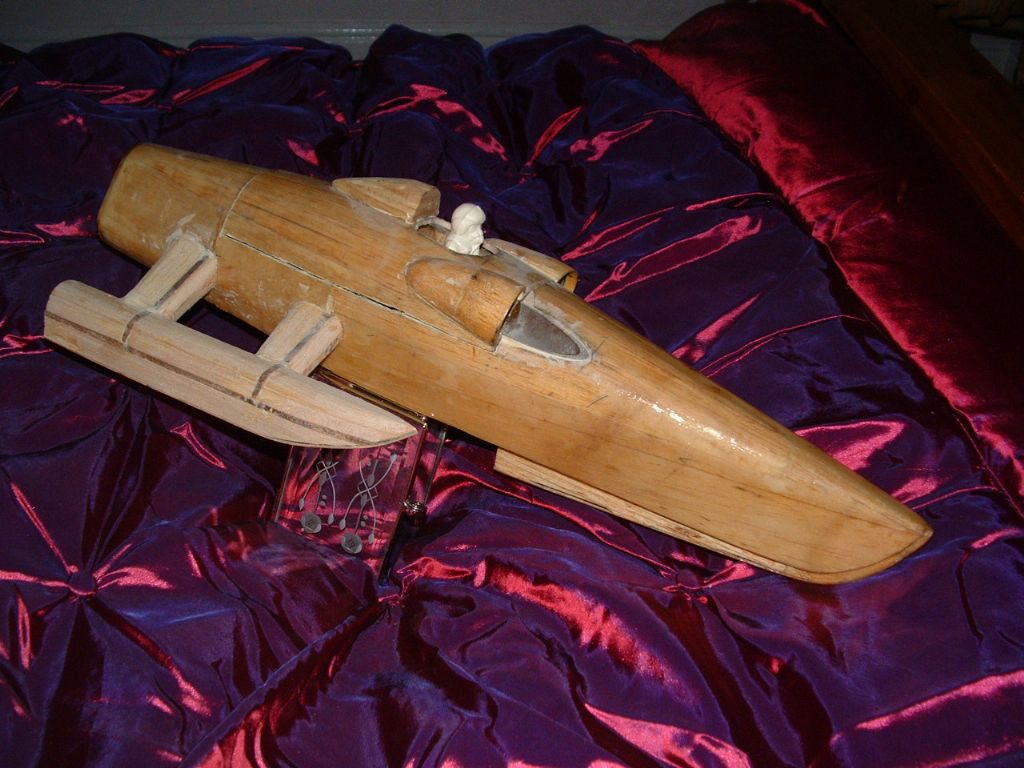
A model still waiting completion after years of sitting about. The bits I bought are not suitable, as now I needed and need help in sorting out the running hardware. It took a while for me to realise that the rear sponsons were there to support the heavy back end due to the jet engine, therefore the CG should be well aft.
In the case of the Mermaid, I realised early on the CG needs to be towards the stern. I was also confident that the model would float.
To all, I have now read the KK eezebilt site material.
I am encouraged that without prompting I have but in a lot of Stringers? to support the sheeting. I have also tissued the hull, to improve the surface finish, and to increase the strength. I have also varnished all the interior (before closing the various chambers) and exterior with several coats of varnish.
Where I am totally without knowledge is the hardware. It seems that either a 2 or 4mm shaft will do. I am perhaps mostly concerned (now) about frictional losses than strength. I have a 4mm prop shaft (to long for this application) which in principal could be better in that the shaft is bushed each end, the middle therefore not in contact with the outer tube. I suspect that it is much heavier than a 2mm shaft.
The video has also been useful, in that I was intending to put in a higher wattage motor than one of the ones I have to hand. Th video convinced me that the model probably could not hydrodynamically cope with so much thrust.
Now I will look at the motors and ESCs I have to hand.
I am also considering the rudder assembly, in that I intend to use a outrigger assembly Not pretty, although functional, not requiring the hull to be pierced. It is also ugly in that the control arm will be visible.
I am considering offsetting the rudder, out of the direct prop wash, so that I can remove the prop shaft for drying and lubrication, without removing the rudder. Would odd setting the rudder cause the model to become sensitive to which direction it is turning?
All the time I am worried about weight, the hull is light, I would like to keep the finished model light.
The spray rails are interesting, are they helpful? is it as the model accelerates, turns? Perhaps rather bizarrely, I had considered increasing the beam by attaching a sort of side pod either side, to hopefully increase the stability at speed. I then thought, it would no longer be anything like a KKT Mermaid, more a hybrid, that you might as well started with, but for me experimentation is what I like doing. I this case I I am less clear what I am trying to achieve.



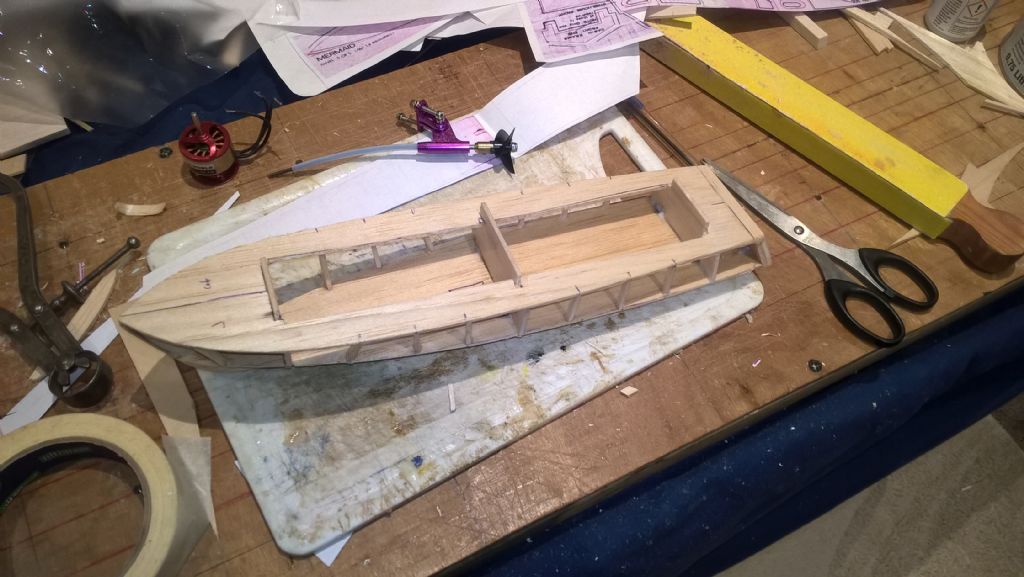
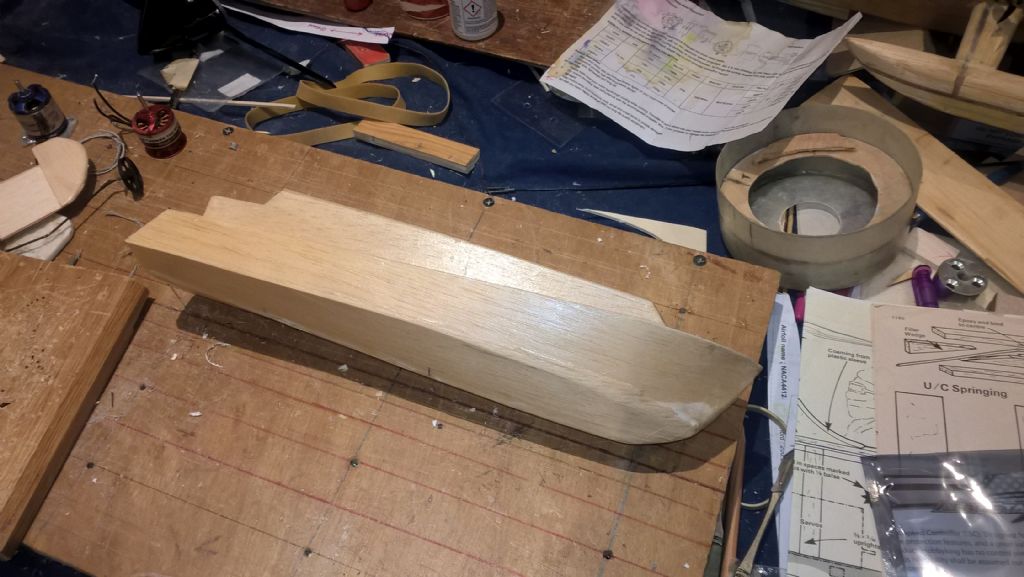
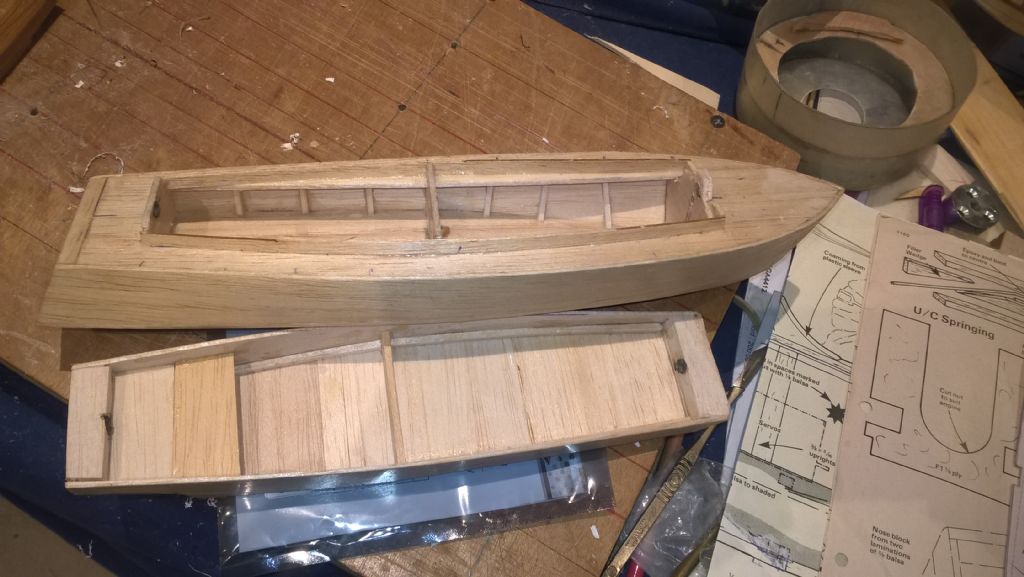
 I always use 4mm shafts even on the little boats.
I always use 4mm shafts even on the little boats.
 is OK on small water but I wouldn't go to a big lake with it. It has a 2mm shaft on a 380 brushed motor – that's probably pushing it, but, it will plane on about 3/4 throttle with assistance from a small step under the hull.
is OK on small water but I wouldn't go to a big lake with it. It has a 2mm shaft on a 380 brushed motor – that's probably pushing it, but, it will plane on about 3/4 throttle with assistance from a small step under the hull.